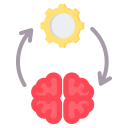
Meditative Practices for Students: Focus, Calm, and Sustainable Success
Chosen theme: Meditative Practices for Students. Explore practical, science-backed ways to build attention, ease anxiety, and study with more meaning. Try today’s ideas, tell us what happens, and subscribe to grow with our learning community.
Why Meditation Works for Students
Heavy course loads can flood the body with stress hormones, nudging attention toward worries instead of worksheets. Mindfulness practices reduce rumination, support working memory, and stabilize attention networks, helping your prefrontal cortex steer decisions while the amygdala settles down.
Breath reset in ninety seconds
Exhale slowly through the nose, pause briefly, then inhale without strain. Try a gentle box pattern: four counts in, four hold, four out, four hold. Repeat for ninety seconds and notice shoulders drop, jaw soften, and attention return.
Shape your study-friendly environment
Sit with a supported back, plant your feet, and set a soft phone timer. Earbuds can reduce distractions, but silence works too. Choose a consistent spot—a familiar chair or bench—to cue your mind that practice is beginning now.
Hook new habits to existing routines
Pair one minute of mindful breathing with familiar anchors: after closing your laptop, before opening a textbook, or right when you sit down in lecture. Comment with your favorite anchor, and inspire another student to try it today.
Techniques That Fit Student Tasks
Focused attention for reading and problem sets
Choose a single anchor—the breath or a pencil’s weight in your fingers. When your mind wanders, gently return without criticism. This strengthens selective attention, helping you stick with dense paragraphs and multi-step solutions without constant tab switching.
Open monitoring for lectures and discussions
Rest in a broad, curious awareness. Notice sounds, ideas, and questions rise and pass without chasing every impulse. This practice builds meta-attention, helping you catch key themes, connect concepts, and respond thoughtfully instead of reacting automatically.
Loving-kindness for group projects and campus climate
Silently offer phrases like, “May I be steady; may you be well; may our team succeed.” Compassion practices soften defensiveness, reduce social stress, and make collaboration feel safer. Share a phrase that helps you, and we’ll feature community favorites.

Real Student Stories
Alex began with two-minute breath resets before chemistry homework. Within three weeks, late-night doomscrolling dropped, and review sessions felt calmer. During midterms, Alex noticed wandering thoughts sooner and returned to problems faster—with fewer careless errors and more patience.
Daily Rituals That Protect Your Study Energy
Morning clarity check
Sit for two minutes before checking messages. Name your top intention for the day, then visualize completing it with a steady breath. This brief pause aligns priorities and reduces the urge to chase every notification or distraction.
Digital boundaries that preserve focus
Silence nonessential alerts during study blocks. Place your phone out of reach and face down. When you feel the itch to check it, notice the urge, label it kindly, and return. Share your best boundary trick to help a fellow student.
Accountability that feels human
Text a friend, “Two minutes of breathing, then I start chapter four.” Send a thumbs-up when done. Gentle buddy systems add warmth, not pressure, and turn solitary goals into shared wins. Invite a classmate and begin together today.
Exams, Deadlines, and High-Pressure Moments
Before the exam: prime your nervous system
Stand tall, relax your jaw, and breathe low into your belly. Visualize reading the first question calmly and locating one clear starting point. Remind yourself: nerves mean readiness. Comment with your pre-exam ritual to inspire another reader.
During the exam: micro-pauses, macro-focus
If panic spikes, pause for one slow breath. Place your attention on the sensation of the pen in your fingers, then return to the problem. This two-second reset preserves accuracy, reduces spirals, and protects crucial working memory.
After the exam: reflect without spiraling
Set a ten-minute window to review what went well and what to adjust. Then release it. Kindness is not complacency; it is fuel for sustainable improvement. Share one lesson learned, and we will compile a community checklist.
Community, Belonging, and Sustainable Practice
Find or form a campus meditation circle
Choose a weekly time, keep it short, and rotate facilitation. Start with a three-minute shared practice, then discuss what helped. Publish times in group chats or bulletin boards. Tell us where you meet, and we’ll cheer you on.
Partner with faculty and support services
Ask an instructor to open class with one intentional breath. Many will say yes. Counseling and wellness teams often share simple scripts. Collaboration normalizes care, reduces stigma, and makes calm a collective norm rather than a private struggle.
Share your voice and shape this space
Post a comment with your favorite practice, a challenge you faced, or a campus resource others should know. Subscriber spotlights highlight real experiences, helping new students feel welcome and motivated to begin their first mindful minute today.

Next Steps: Keep Learning, Keep Breathing
Pick focused attention, open monitoring, or loving-kindness. Schedule three short sessions and track how your energy and focus feel before and after. Small, consistent reps beat heroic bursts. Share your plan, and we’ll follow up next week.

Next Steps: Keep Learning, Keep Breathing
Notice sleep quality, study stamina, and mood, not just minutes logged. Even messy sessions count. Curiosity over judgment keeps momentum alive. Comment with one measurable shift you observe, and help refine what we practice together.
